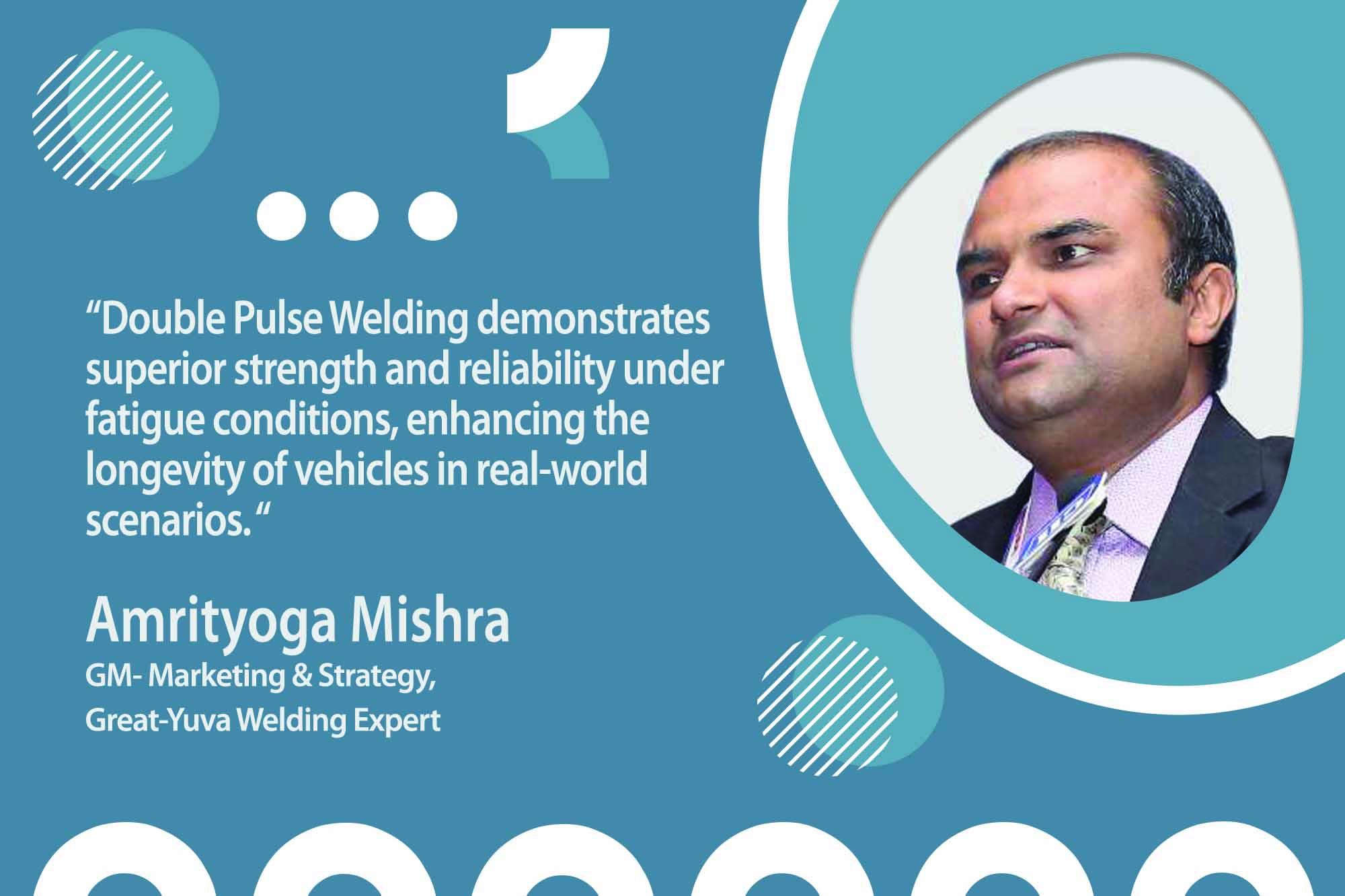This article delves into the revolutionary strides of the Double Pulse Welding Machine, navigating its benefits, evolution, and pivotal role in the ‘Make in India’ initiative. It also revolutionises the welding landscape.
Digital marvels such as double-pulse welding Machines are transforming the welding industry, offering myriad benefits beyond mere efficiency. As we delve into the depths of this technological innovation, we find a tapestry of advancements that redefine the welding process and align with the global ‘Make in India’ initiative championed by Prime Minister Modi.
The essence of double-pulse welding
At its core, Double Pulse Welding is not just about efficiency but about forgiving innovation. Picture this: an operator navigating the delicate art of welding, making minor errors. In traditional setups, these mistakes could compromise the quality of the weld. However, the Double Pulse Welding Machine steps in as a forgiving ally. It identifies and accommodates these errors and supports the operator in creating impeccable welds.
Aesthetics and quality
Let us now discuss aesthetics, an important topic in today’s very competitive manufacturing world. With its Bedex-like design, the Double Pulse Welding Machine raises the bar for visual brilliance. These devices expand the boundaries of what is feasible in the welding field by carefully balancing quality and speed. The machine maintains a constant arc length to achieve excellent welding even when the operator modifies the stick-out.
In a market where conventional welding machines often hover around the 60% or 70% rating, Double Pulse Welding Machines shine with a 100% rating at 500 amps. This rating unleashes a new realm of possibilities, allowing for the safe use of a 1.67 wire, even for thick plates. This enhances safety and expands the scope of what can be achieved in welding applications.
Strength in fatigue
Beyond the surface-level benefits, extensive research and practical applications have unveiled a hidden strength within the Double Pulse Welding technique. When subjected to fatigue conditions and impact loads, the joints produced by double-pulse welding demonstrate superior strength and reliability. This bodes well for the longevity and endurance of vehicles, like cars or bikes, in real-world scenarios.
The evolution of welding machines
To appreciate the significance of double-pulse welding, one must trace the evolution of welding machines over the past century. The journey has been transformative, from simple transformers to diode-based rectifiers, characterised games, and finally, the current state of inverted machines with full digital control. The latest iterations may be nearly double the cost of basic inverters, but the industry is waking up to their profound advantages.
Advanced waveforms and reduced spatter
The digital control in these machines manifests in highly advanced waveforms, ensuring a stable start and reducing spatter levels significantly. Unlike the conventional counterparts, the digital machines showcase a flat weld bead surface, saving up to 10% of filler material. In practical terms, this not only enhances the quality of the weld but also leads to efficiency gains in the production process.
Adapting to change
As industries worldwide grapple with the need for efficiency, precision, and sustainability, the adoption of double-pulse welding Machines is gaining momentum. Although they come at a premium compared to basic inverters, realising the benefits prompts a gradual shift on the Indian shop floor. The importance of these advancements is evident when comparing the analogue model’s waveform with the highly advanced waveform of the digital model.
The feedback system
One of the standout features of Double Pulse Welding Machines is their ability to maintain consistency in the face of changing conditions. The feedback system ensures that even with input voltage variations, the motor’s revolution per minute remains constant. This contrasts sharply with conventional machines, where such variations could lead to unpredictable outcomes.
Embracing the future
Beyond the technical specifications, Double Pulse Welding Machines offer additional benefits that resonate with manufacturers. Automatic parameter selection, memory channels for storing preferred settings, and the ability to work with various materials, including aluminium, stainless steel, and carbon steel alloys, showcase the adaptability of these machines. They are not just tools but intelligent solutions that pave the way for a smarter, more efficient future.
The rise of double-pulse welding Machines represents a pivotal moment in the history of welding technology. As we reflect on the journey from analogue to digital control, it becomes clear that these machines are not just about meeting current demands but are harbingers of a future where precision, efficiency, and sustainability are paramount. The welding industry, driven by these innovations, is poised for a transformative era, where the fusion of technology and craftsmanship creates strong welds and works of art in themselves.
Cookie Consent
We use cookies to personalize your experience. By continuing to visit this website you agree to our Terms & Conditions, Privacy Policy and Cookie Policy.





















